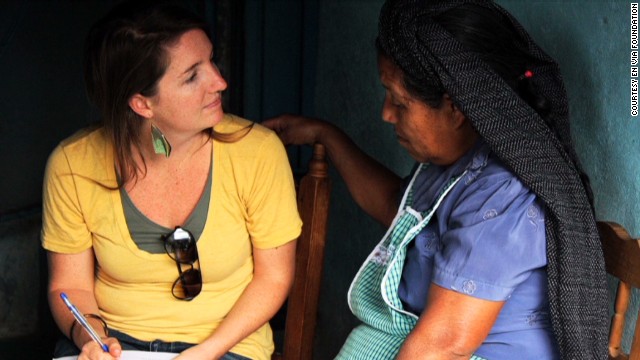January 30, 2014: 4:01 PM ET

FORTUNE -- Fresh from signing a $2.91 billion deal with Larry Page to acquire Google's Motorola unit, Lenovo CEO Yuanqing Yang spoke to Motorola employees for 45 minutes at the latter company's headquarters outside of Chicago on Thursday. Immediately after that meeting, Yang discussed the deal and Lenovo's plans to compete in the smartphone market with Fortune.
The following is an edited transcript of that conversation.
You just spoke with Motorola employees in Chicago. What was your message to them, and how was it received?
The message to them is that this is a good combination. We are very complementary to each other. Together we can win in the smartphone industry. I wish we could sell more than 100 million smartphones together in the year 2015. I think the team here is very motivated and understands that we are very complementary. Lenovo currently has China and emerging markets. They have the U.S., Latin America, and a little bit of the European market. We are both committed to innovation. They have very strong engineering capabilities and very good relationships with carriers. So this combination is perfect.
How did you first get interested in Motorola?
It's a very, very interesting love story. We were interested in Motorola a long time ago, even when they split into two companies, Motorola Mobility and Motorola Solutions (MSI) [in January of 2011 --Ed.].
Right after Google (GOOG) bought Motorola [in 2012 ], I invited [Google executive chairman] Eric Schmidt to have a dinner at my house. I told him, "If you think you want run the hardware business, you can keep the business; but if you are not interested in the hardware business, we definitely can handle that, take over that."
He remembered that, and two months ago, he sent me an e-mail. I called him back, and he asked me, "Are you still interested in Motorola?" I said, "Definitely." We started to discuss it. I went to Silicon Valley many times. [Google CEO] Larry Page invited me to his house to have a dinner. Very quickly -- in just two months -- we closed the deal.
You've said that you plan to sell more than 100 million smartphones by 2015. That's roughly double both companies' combined 2013 sales: According to IDC, Lenovo sold 45 million devices for the year and Motorola about 10 million. Where is the growth going to come from?
Definitely both emerging markets and Motorola markets. Even though Motorola has a lot of influence in the U.S. and Latin America, the market share is still limited. So we still have very good opportunity to grow. We want to become a very decent player in these markets.
Before this deal, your plan was to build up the Lenovo brand in the U.S. and then enter the market with smartphones. This deal changes that strategy -- now, you have two brands of smartphones that are sold in different markets. Moreover, Lenovo's product strategy is to offer a large number of models, while Motorola has a simplified product line. How will you integrate those two in the U.S. and in emerging markets?
We will fully leverage the Motorola brand in the U.S. and Latin America, just like we leveraged the ThinkPad brand in the PC space. Motorola will be our smartphone product.
So there will be no Lenovo-branded phones in the U.S.?
We haven't made a final decision. Most likely we will leverage the Motorola brand, but it could be something like "Motorola by Lenovo."
In China, certainly we will keep the Lenovo brand, but it is possible that we will reintroduce the Motorola brand as well. We have a full range of channels to sell our phones, so for different channels we could use different brands to maximize our sales volume.
Regarding the product portfolio, we don't want to be playing just in the entry level or to be viewed as a cheaper brand. We want to compete in the full range of the product line, including the premium segment. Both Lenovo and Motorola have the DNA of innovation. I believe we can develop a very innovative or very premium product. Meanwhile, we should be more competitive in the entry level given that Lenovo has global scale in our manufacturing capabilities and operational efficiency.
Will you continue making Motorola phones in the U.S., or will manufacturing shift to China?
We haven't made a final decision. In my understanding, Motorola does customization of phones [in the U.S.]. If that is what the market needs, we will definitely keep that. It is a good model, so we may replicate that in other markets.
Between Texas and North Carolina, where you make PCs, how many manufacturing employees will Lenovo have in the U.S.?
About 250. [A Lenovo spokesman clarified that all of those 250 workers are in North Carolina, and the workers who assemble Motorola phones in Texas are employees of a contract manufacturing firm, not Motorola.]
Lenovo now faces two regulatory reviews, including from the Committee on Foreign Investment in the U.S.: One for Motorola and one for your purchase of the IBM server business, announced last week. Do you think you can get cleared on both? What is your message to U.S. regulators and lawmakers who may be concerned about a Chinese company pushing into the U.S. market?
We will cooperate with all the governments to go through the process.
With Motorola, Lenovo will be the No. 3 smartphone maker worldwide. Do you think your company can catch up with Apple (AAPL) or Samsung, who are still far ahead of you? And how long will it take?
Definitely, over time. Our mission is to surpass them.
Are there similarities between this deal and the Lenovo acquisition of IBM's PC business in 2005, which transformed Lenovo into a global PC brand?
I think there are lots of similarities. We are definitely complementary, so we can replicate the success we've had with the ThinkPad in the PC business. I think this is a good deal for both Google and Lenovo. Together, we can win more market [share] and have a worldwide footprint.
For more, read Fortune's detailed look at Lenovo and its ambitions from 2013.
In an interview with Fortune, Yuanqing Yang says that his company seeks to replicate its ThinkPad success with Motorola.

FORTUNE -- Fresh from signing a $2.91 billion deal with Larry Page to acquire Google's Motorola unit, Lenovo CEO Yuanqing Yang spoke to Motorola employees for 45 minutes at the latter company's headquarters outside of Chicago on Thursday. Immediately after that meeting, Yang discussed the deal and Lenovo's plans to compete in the smartphone market with Fortune.
The following is an edited transcript of that conversation.
You just spoke with Motorola employees in Chicago. What was your message to them, and how was it received?
The message to them is that this is a good combination. We are very complementary to each other. Together we can win in the smartphone industry. I wish we could sell more than 100 million smartphones together in the year 2015. I think the team here is very motivated and understands that we are very complementary. Lenovo currently has China and emerging markets. They have the U.S., Latin America, and a little bit of the European market. We are both committed to innovation. They have very strong engineering capabilities and very good relationships with carriers. So this combination is perfect.
How did you first get interested in Motorola?
It's a very, very interesting love story. We were interested in Motorola a long time ago, even when they split into two companies, Motorola Mobility and Motorola Solutions (MSI) [in January of 2011 --Ed.].
Right after Google (GOOG) bought Motorola [in 2012 ], I invited [Google executive chairman] Eric Schmidt to have a dinner at my house. I told him, "If you think you want run the hardware business, you can keep the business; but if you are not interested in the hardware business, we definitely can handle that, take over that."
He remembered that, and two months ago, he sent me an e-mail. I called him back, and he asked me, "Are you still interested in Motorola?" I said, "Definitely." We started to discuss it. I went to Silicon Valley many times. [Google CEO] Larry Page invited me to his house to have a dinner. Very quickly -- in just two months -- we closed the deal.
You've said that you plan to sell more than 100 million smartphones by 2015. That's roughly double both companies' combined 2013 sales: According to IDC, Lenovo sold 45 million devices for the year and Motorola about 10 million. Where is the growth going to come from?
Definitely both emerging markets and Motorola markets. Even though Motorola has a lot of influence in the U.S. and Latin America, the market share is still limited. So we still have very good opportunity to grow. We want to become a very decent player in these markets.
Before this deal, your plan was to build up the Lenovo brand in the U.S. and then enter the market with smartphones. This deal changes that strategy -- now, you have two brands of smartphones that are sold in different markets. Moreover, Lenovo's product strategy is to offer a large number of models, while Motorola has a simplified product line. How will you integrate those two in the U.S. and in emerging markets?
We will fully leverage the Motorola brand in the U.S. and Latin America, just like we leveraged the ThinkPad brand in the PC space. Motorola will be our smartphone product.
So there will be no Lenovo-branded phones in the U.S.?
We haven't made a final decision. Most likely we will leverage the Motorola brand, but it could be something like "Motorola by Lenovo."
In China, certainly we will keep the Lenovo brand, but it is possible that we will reintroduce the Motorola brand as well. We have a full range of channels to sell our phones, so for different channels we could use different brands to maximize our sales volume.
Regarding the product portfolio, we don't want to be playing just in the entry level or to be viewed as a cheaper brand. We want to compete in the full range of the product line, including the premium segment. Both Lenovo and Motorola have the DNA of innovation. I believe we can develop a very innovative or very premium product. Meanwhile, we should be more competitive in the entry level given that Lenovo has global scale in our manufacturing capabilities and operational efficiency.
Will you continue making Motorola phones in the U.S., or will manufacturing shift to China?
We haven't made a final decision. In my understanding, Motorola does customization of phones [in the U.S.]. If that is what the market needs, we will definitely keep that. It is a good model, so we may replicate that in other markets.
Between Texas and North Carolina, where you make PCs, how many manufacturing employees will Lenovo have in the U.S.?
About 250. [A Lenovo spokesman clarified that all of those 250 workers are in North Carolina, and the workers who assemble Motorola phones in Texas are employees of a contract manufacturing firm, not Motorola.]
Lenovo now faces two regulatory reviews, including from the Committee on Foreign Investment in the U.S.: One for Motorola and one for your purchase of the IBM server business, announced last week. Do you think you can get cleared on both? What is your message to U.S. regulators and lawmakers who may be concerned about a Chinese company pushing into the U.S. market?
We will cooperate with all the governments to go through the process.
With Motorola, Lenovo will be the No. 3 smartphone maker worldwide. Do you think your company can catch up with Apple (AAPL) or Samsung, who are still far ahead of you? And how long will it take?
Definitely, over time. Our mission is to surpass them.
Are there similarities between this deal and the Lenovo acquisition of IBM's PC business in 2005, which transformed Lenovo into a global PC brand?
I think there are lots of similarities. We are definitely complementary, so we can replicate the success we've had with the ThinkPad in the PC business. I think this is a good deal for both Google and Lenovo. Together, we can win more market [share] and have a worldwide footprint.
For more, read Fortune's detailed look at Lenovo and its ambitions from 2013.
Posted in: Apple, Google, Larry Page, Lenovo, Mobile, Motorola, Samsung, Smartphones, ThinkPad, Yuanqing Yang

 Report editor: We can reduce cancer risk
Report editor: We can reduce cancer risk
